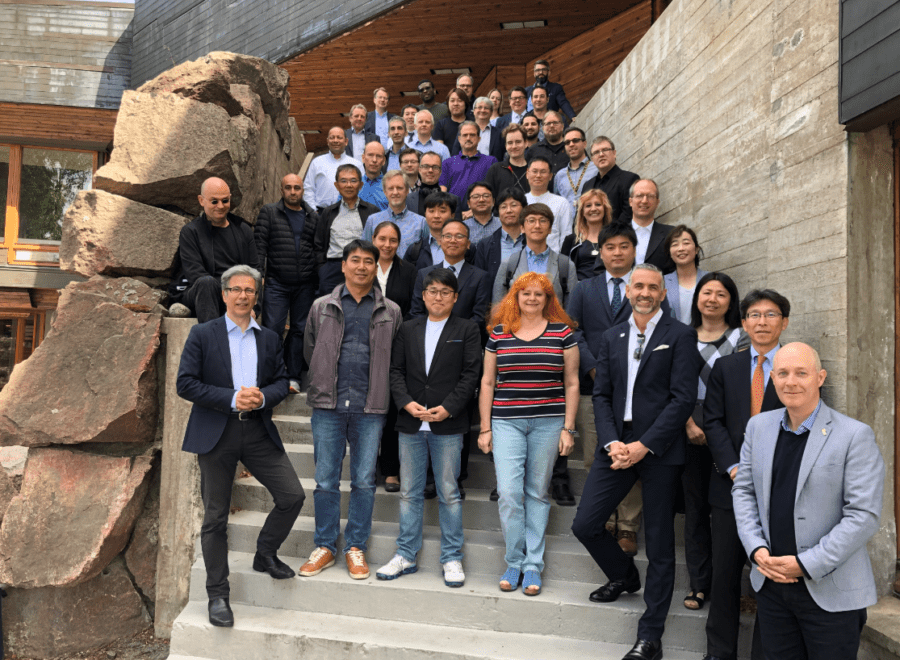With the new mmWave frequencies becoming a key to unlocking the full potential of 5G, a joint effort by the IEEE Standards Association (IEEE SA) and the International Electrotechnical Commission (IEC) resulted in the publication of two international standards.
These standards aim to provide a central platform for electric and magnetic fields (EMF) compliance testing of all 5G mmWave devices:
- IEC/IEEE 63195-1-2022: International Approved Standard – Measurement procedure for the assessment of power density of human exposure to radio frequency fields from wireless devices operating in close proximity to the head and body
- IEC/IEEE 63195-2-2022: International Approved Standard – Assessment of power density of human exposure to radio frequency fields from wireless devices in close proximity to the head and body – Part 2: Computational Procedure
“The new 5G EMF standard is right at the core of the IEC vision – IEC everywhere for a safer, more efficient world – and demonstrates that the cutting edge expertise of IEC TC 106 is fundamental to the safe deployment of 5G technology.”
– Philippe Metzger, IEC Secretary General
What is 5G mmWave?
5G mmWave (or millimeter wave) is an ultra-high frequency band in the millimeter wave range promising transmission speeds 100x faster than 4G LTE. This new cellular technology is one of the key elements of the 5G technology mix, benefiting mobile Wi-Fi, cellular backhaul, and home internet service.
It uses gigahertz (GHz) frequencies to enable faster data rates and lower latency in high-traffic, high-density scenarios. In cities, public transport hubs, and sports stadiums, 5G mmWave technology helps deliver on the full promise of 5G.
Within a few years, most 5G mobile devices will have mmWave capability and this is why an international standard is needed to tap into this new mmWave technology and help enable compliance with EMF safety limits.
IEC/IEEE 63195: Matching 5G Technology with the Highest Safety Standards
The new IEC/IEEE 63195 standards for 5G EMF are intended to meet the fast-paced advances in mobile technology and help consumers feel confident that 5G technology is matched with the state-of-the-art EMF safety testing standards.
A key feature of these standards is the advanced assessment of the mmWave power density, which is present right at the head and body when a 5G device is being used, to check on the exposure limits for power density specified by national and global health agencies.
mmWave signals do not get absorbed in the human body the way the lower frequencies do. In fact, mmWave radiation penetrates only a few mm of the skin surface and does not reach the inner regions of the body. This is why more advanced testing standards, laboratory testing equipment, and mmWave testing probes are required for 5G mmWave devices.
Gathering experts from academia, industry, governments, and testing laboratories, standards development was first initiated as an IEC Technical Report in 2018 to reflect the state of the art of the available testing technologies.
This effort later continued as the development of IEC/IEEE 63195 standards to help enable the safety testing of the very first mmWave devices and trial systems. The standards deliver testing methods that cover computation and measurement for frequencies from 6GHz to 300GHz.
As technology evolves, experts from IEEE SA and IEC will continue their collaborative work to provide the most up-to-date assessment methods for future international standards.

I would like to acknowledge the significant effort from all experts of IEC TC106 and IEEE ICES TC34 involved in developing these new standards and especially the Co-Conveners Kai Niskala from Finland, John Roman from the US, Teruo Onishi from Japan, and Andreas Christ from Switzerland.
To learn more, visit:
Authors:
- Mike Wood, Chairman TC106, International Electrotechnical Commission (IEC)
- Teruo Onishi, TC 34 Chair, IEEE International Committee on Electromagnetic Safety (ICES)








